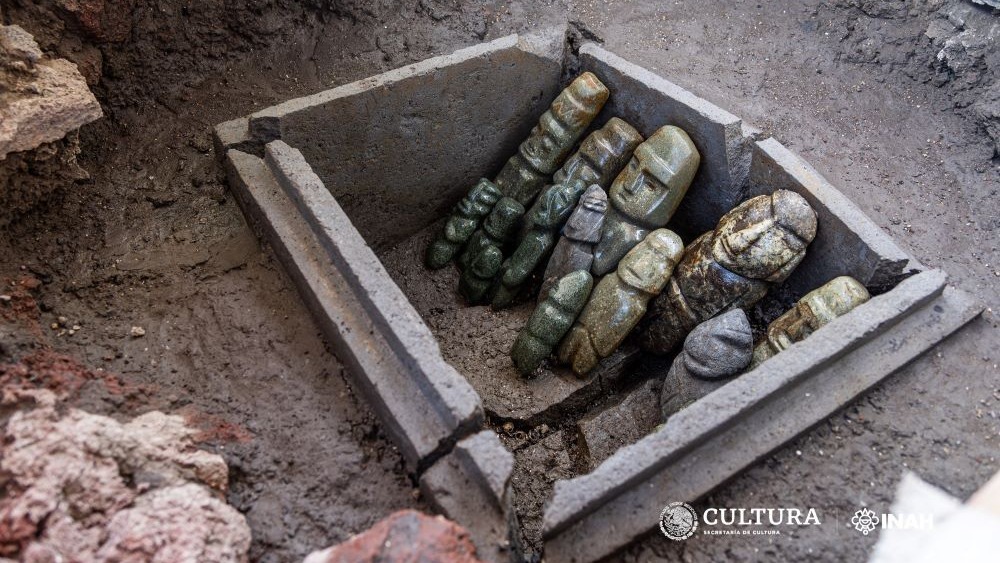Stone human 'effigies' unearthed at Aztec temple in Mexico City were likely looted in battle and offered to the gods
Archaeologists in Mexico City discovered a bevy of stone objects carved to look like humans at a former Aztec site.

Archaeologists in Mexico City have unearthed a collection of stone figurines depicting humans — carvings that the Aztecs likely used as offerings.
The 15 objects were discovered tucked inside a stone chest buried on the former site of the Templo Mayor, which once served as the temple complex of Tenochtitlán, the capital of the Aztec Empire. Spanish forces destroyed the temple in 1521, and the site is now home to the Mexico City Metropolitan Cathedral, according to a translated statement.
Fourteen of the artifacts portray men, while the smallest of the group features a woman.
All of the figurines are in the Mezcala style related to an early Mesoamerican culture that once existed in Guerrero, a state in southern Mexico, that was known for creating objects depicting humans, according to The Metropolitan Museum of Art.
Related: Remains of Aztec dwelling and floating gardens unearthed in Mexico City
Researchers think the Aztecs valued Mezcala objects and may have looted the sculptures in battle, according to the statement.
"This means that when the Mexicas (Aztecs) subdued those peoples, the figurines were already true relics, some of them more than 1,000 years old," archaeologist Leonardo López Luján, director of the Templo Mayor Project, which led the excavation, said in the statement. "Presumably they served as cult effigies, which they appropriated as booty of war."
Get the world’s most fascinating discoveries delivered straight to your inbox.
In addition to the figurines, the chest contained two rattlesnake-shaped earrings, 186 green metamorphic stone beads, snails, shells and marine corals.
"In their homes, the Mexicas used to keep their most precious belongings in palm-frond chests, such as fine feathers, jewelry or cotton garments," López Luján said in the statement. "And if we see it from the Templo Mayor … we can imagine the priests storing in these 'stone cases' the quintessential symbols of water and fertility: sculptures of the rain gods, green stone beads, shells and snails."
Jennifer Nalewicki is former Live Science staff writer and Salt Lake City-based journalist whose work has been featured in The New York Times, Smithsonian Magazine, Scientific American, Popular Mechanics and more. She covers several science topics from planet Earth to paleontology and archaeology to health and culture. Prior to freelancing, Jennifer held an Editor role at Time Inc. Jennifer has a bachelor's degree in Journalism from The University of Texas at Austin.


